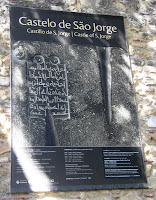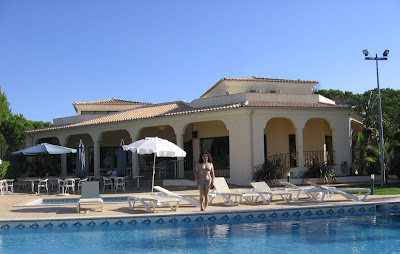Europe, Sept, 2010 - Portugal
From Cáceres the night train took us to Lisbon
The subway took us to the city center, now a pedestrian mall.
This was the Barrio Baixi, rebuilt after the earthquake and tsunami of 1755 which destroyed most of the lower city. A few blocks away is the Elevador da Gloria, (below) a funicular that links downtown to the Bairro Alto district, on a cliff above.
And the Praça dos Restauradores, commemorating the restoration of Portuguese independence in 1640 after 60 years of Spanish rule.
But we found the trolley stop and took a trolley up the hill to the castle.
The trolley let us out at a terrace with a great view of the eastern part of the city.
Higher up, we entered the castle, originally built by the Romans in the 6th century, and modified by the Visigoths, Moors, and the Christian King Afonso Henriques who captured it in 1147.
At the entrance is a statue of King Afonso Henriques, founder of the Portuguese nation (and presumably, Alejandra’s ancestor)
The towers and walls are most of what remains.
But the view is great. Below is the river front Terreiro do Paço or "the palace's square" where the royal palace stood before the earthquake, and in the distance is the 25th of April bridge, named after the 1974 coup that let to the end of the Portuguese dictatorship and to democracy.
The western wing of the monastery is now a maritime museum, unfortunately closed when we visited.
The landscape south of Lisbon is typical Mediterranean, low hills covered with shrubs and small trees, and the occasional olive or citrus grove, or vineyard; much like parts of Southern California or Central Chile .
Faro, in the far south is a favorite vacation spot for the English, with attractive beaches, abundant golf courses and resorts. Our hotel turned out not to be in Faro as it seemed to be listed by Expedia, but some 17 km. away. Careful reading would have prevented the error, but that didn’t help when we got off the bus. After looking unsuccessfully for a local hotel (all expensive and full) we took a bus and then a taxi to our Hotel, the Ria Plaza Resort, in the middle of nowhere.
Hotel, pool, restaurant, bar, tennis, golf: pleasant but not especially Portuguese. Understandably popular with British vacationers. We lunched on club sandwiches and beer and enjoyed the rest from frenzied tourism.
Next: Andalucía
























No comments:
Post a Comment